Enterprise Application Integration (EAI) breaks data barriers within your organization while streamlining the free flow of information. It refers to the process of connecting different software applications and enabling them to exchange data and communicate with each other seamlessly. EAI has become essential to modern-day businesses as organizations use multiple software applications to manage varied business functions. Organizations must ensure that their software systems are integrated and work together seamlessly to remain competitive. Businesses increasingly use EAI trends to deliver better customer, partner, and employee experiences.
In recent years, EAI has seen significant advancements, and various emerging trends are shaping how businesses integrate their applications. And this blog will discuss the latest EAI trends, market potential & much more. So, let’s get started!
Enterprise Application Integration Market Trends
Let’s explore the key trends driving the EAI market, providing insights into the dynamic landscape and helping organizations navigate the integration challenges of today’s digital era.
- Technavio Research[1] suggests;
The global enterprise application and integration services market could grow at a CAGR of 13% between 2023 to 2027 and amount to USD 7.2 Billion by 2027. - Maximize Market Resarch[2] suggests;
- The Enterprise Application Integration Market is divided into On-premise, Cloud, and Hybrid deployment types. And hybrid deployment could grow at the highest rate (11%) between 2023 and 2029. A hybrid platform syncs critical data on-premise and in the cloud for businesses.
- The Enterprise Application Integration Market is divided by organization size, like small and medium enterprises and large enterprises. And Large enterprises are at the top of businesses utilizing EAI, and their market share is expected to grow at 11% till 2029.
- The geographical segments of the Enterprise Application Integration Market include Europe, North America, Latin America, Asia-Pacific, and the Middle East and Africa). And North America is expected to dominate between 2023 and 2029 due to its increasing adoption of EAI.
Enterprise Application Integration Trends
Keeping pace with application integration trends can help organizations optimize their operations, leverage new technologies, and stay competitive. Let’s explore some of the key trends and how they are shaping the future for organizations to streamline business processes, enhance data exchange, and improve overall efficiency.
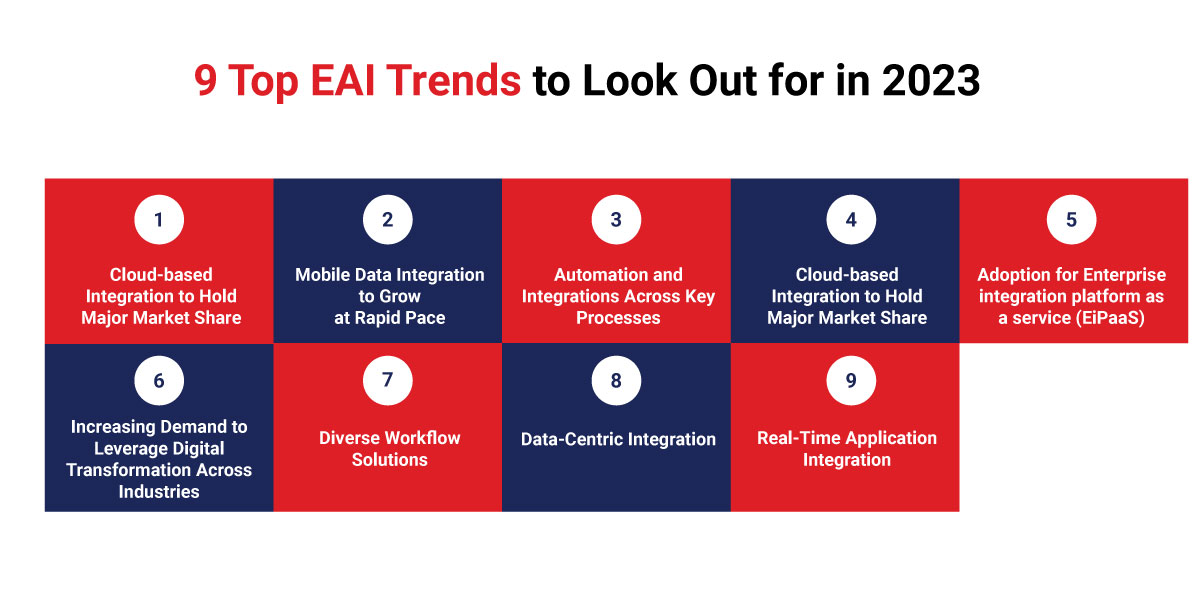
- Cloud-based Integration: In the global enterprise application integration market, the cloud deployment segment is expected to hold a critical market share between 2023 and 2028[3]. Companies are increasingly shifting from on-premise to cloud-based solutions, leading to an immense rise in market demand for EAI. The Cloud utilizes the Microservice architecture, allowing seamless data sharing between cloud and on-premise data centers. Additionally, factors such as competitive pricing, simplified maintenance, and faster connectivity make cloud integration a more feasible option for enterprises.
- Mobile Data Integration: Businesses have already realized the importance of having a mobile presence to increase their reach, which raises the demand for data integration across different mobile platforms and devices. The mobile data integration segment of the global enterprise application integration industry has a significant potential to drive growth[4].
- Automation and Integrations Across Key Processes: Enterprises understand that automation can benefit almost any business process. And to scale automation, they need to ramp up their application integration capabilities. This trend is creating a high demand for EAI. Interestingly, hybrid integration platforms have gained prominence with the rise in hybrid IT environments. They provide a unified approach to integrate on-premises applications, cloud-based services, and Software-as-a-Service (SaaS) applications, further, with a comprehensive set of tools & capabilities for data mapping, transformation, and orchestration across diverse systems. Additionally, microservices architecture has gained significant popularity in recent years. And it is increasingly being used for EAI. Microservices integration breaks down applications into smaller independent services that can communicate with each other through APIs. This approach enables businesses to achieve agility & scalability while maintaining high flexibility.
- Low-Code/No-Code Approach is Gaining Momentum: As the demand for EAI is immense, the low-code/no-code approach is emerging as a solution for developers to overcome the backlog. On the other hand, businesses want control of their processes via automation and prefer to utilize low-code/no-code for development. Popular low-code or no-code integration platforms, like Microsoft Power Platform, are gaining popularity. They enable citizen integrators and business users to create & manage integrations without extensive coding knowledge. These platforms provide visual interfaces, drag-and-drop functionality, and pre-built connectors. They help simplify the integration process & empower non-technical users to participate in integration initiatives.
- Adoption for Enterprise integration platform as a service (EiPaaS): With growing complexities, enterprises run business logic on PaaS (Platform as a Service) and IaaS (Infrastructure as a Service) and do not rely on SaaS. EiPaaS is a cloud-based integration solution that helps businesses connect apps and streamline processes more efficiently. It provides a central hub for applications, systems, programs, and platforms to communicate and exchange data. It automates many processes, reduces errors, improves data accuracy, and enhances visibility into operations while saving time and resources for enterprises.
- Increasing Demand to Leverage Digital Transformation Across Industries: Businesses rely on digital transformation to shift from fast change to steady consolidation of processes to improve efficiency. So, many companies have invested in EAI for EDI (Electronic Data Interchange) for B2B connectivity. As businesses grow and technologies advance, they need to upgrade their data and application approach to ensure the continuity of high quality and better customer experience.
- Diverse Workflow Solutions: Businesses often involve different software working in varying frameworks incompatible with one another. They cannot communicate with each other to share data due to their different frameworks. So, the automation of simple tasks becomes difficult. As part of enterprise application integration trends, EAI helps introduce a middleware framework that allows open and secure data sharing between heterogeneous applications and legacy devices.
- Data-Centric Integration: Companies have realized that data from all the complicated applications used in an enterprise are most valuable today. So, instead of focusing on legacy iPaaS solutions with a point-to-point integration technique, organizations focus more on dPaas(Data Platform as a Service). dPaaS solutions help in data integration and management by rescuing data from the confines of all the applications involved. EAI will continue to incorporate data integration, thus creating a more useful centralized platform.
- Real-Time Application Integration: Mobile, IoT, Wearable, and other devices utilize APIs to communicate with other software systems and apps. Application Programming Interfaces (APIs) play a crucial role in modern EAI. The API-first approach enables the creation of modular & reusable components. It would focus on exposing services and data through well-defined APIs. It allows easier integration with external systems. Modern-day organizations are embracing API management platforms to govern, secure, and streamline the integration of applications through APIs. With real-time API-driven integration, we can make API-centric apps that monitor heartbeat, location, speed, and other parameters on the go. Real-time application integration does not just mean data flow between apps in real-time and data synchronization across various platforms like PCs, laptops, and other handheld devices.
Why Partner with Rishabh Software to Utilize EAI Trends?
We are an experienced enterprise application development services company that can help you leverage the listed EAI trends. In addition to robust application integration capabilities, we offer specialized cloud integration services to ensure seamless connectivity between cloud and on-premise systems. Partnering with us can provide several benefits. Here are some reasons why you might consider partnering with us:
- Developing Customized Solutions
- Leveraging Emerging Technologies
- Our Agile Development Approach
- Strong Support and Maintenance
- Long-Term Customer Partnerships
Our Success Stories:
Case Study: Optimizing Contingent Workforce Management
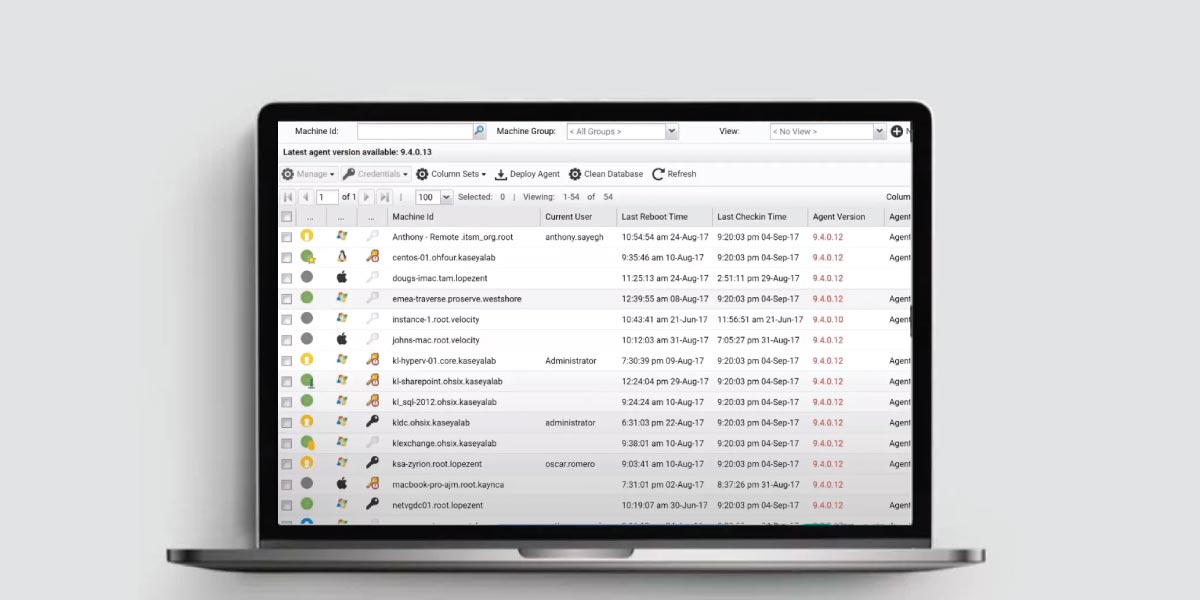
A US-based global IT workforce-providing giant wanted to integrate their existing and different stand-alone IT solutions into a comprehensive workforce management platform. We re-engineered a complete suite of custom-managed services, providing solutions that optimizes, streamlines, and simplify workforce management, increase the visibility of operations, enhance user experiences, and provide access anywhere, anytime.
Key takeaways;
- 40% reduction in cost for workforce acquisition
- 100% contingent workforce management process automation
- 4x increase in the efficiency of business applications
Learn how our efforts in optimizing contingent workflow management helped the client.
Concluding Thoughts
Enterprises must keep enhancing their IT infrastructure to survive the fast-changing landscape and create a competitive edge. As technology advances daily, the demand to integrate newer IT devices, applications, systems, and programs is increasing. EAI is vital for organizations looking to optimize their operations & leverage technology advancements. While the EAI landscape is evolving rapidly, with trends such as cloud-based integration, data integration, low-code/no-code integration, API-centric integration, event-driven architecture, and more shaping how businesses connect & synchronize their systems.
By embracing these trends & partnering with the right technology partner, like Rishabh Software, organizations can streamline their business processes, enhance data exchange, and improve overall efficiency. EAI enables seamless connectivity, collaboration, and innovation across diverse systems, paving the way for digital transformation, enhanced customer experiences, and a competitive edge in the market. As the EAI landscape continues to evolve, businesses need to adapt & embrace emerging technologies to leverage integration strategies. To support this shift, our application integration services are designed to align with your evolving enterprise needs. It would enable them to stay agile, responsive, and interconnected in an increasingly interconnected world.
Footnotes:
1. https://www.technavio.com/report/enterprise-application-and-integration-market-analysis

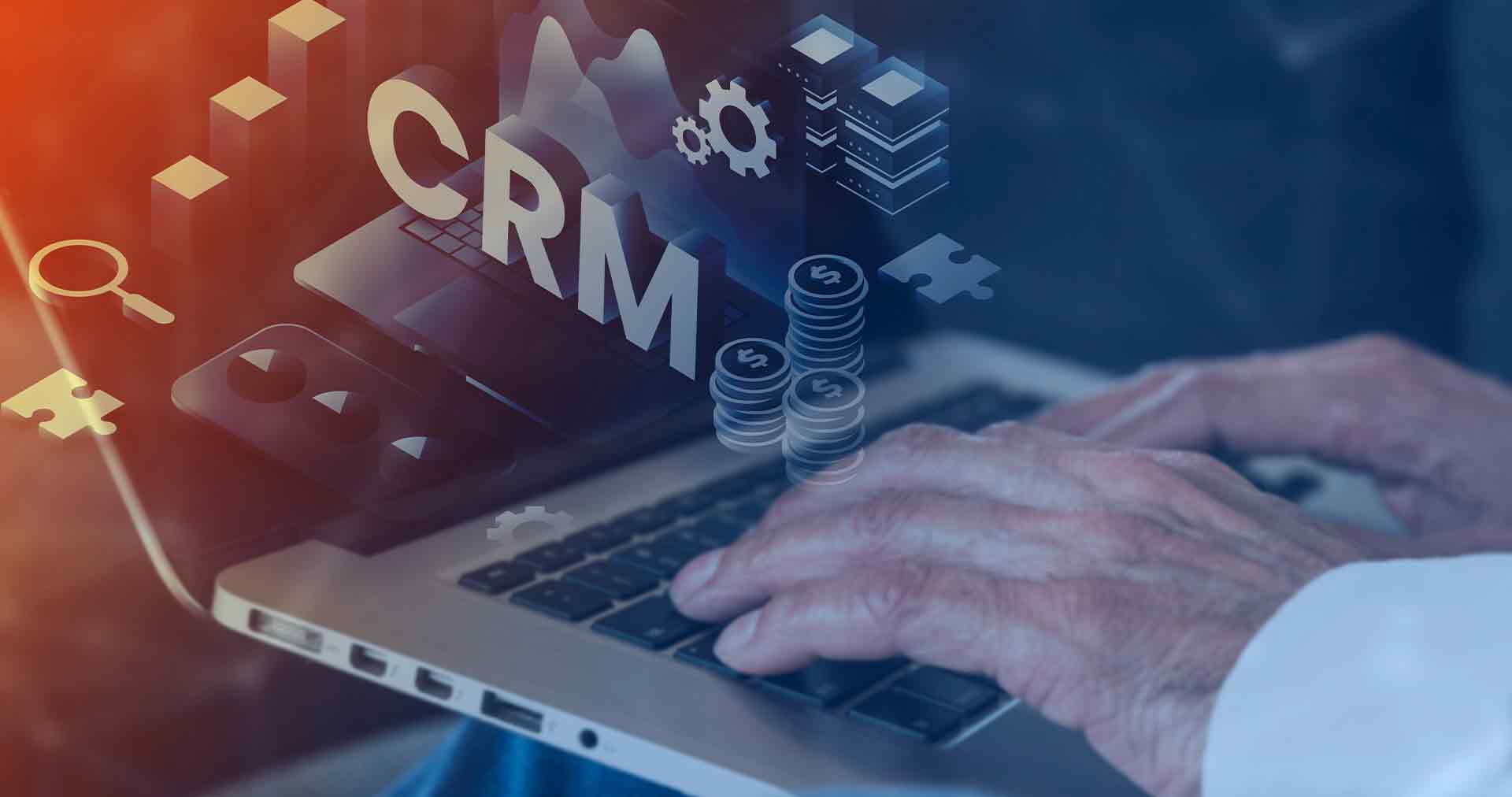


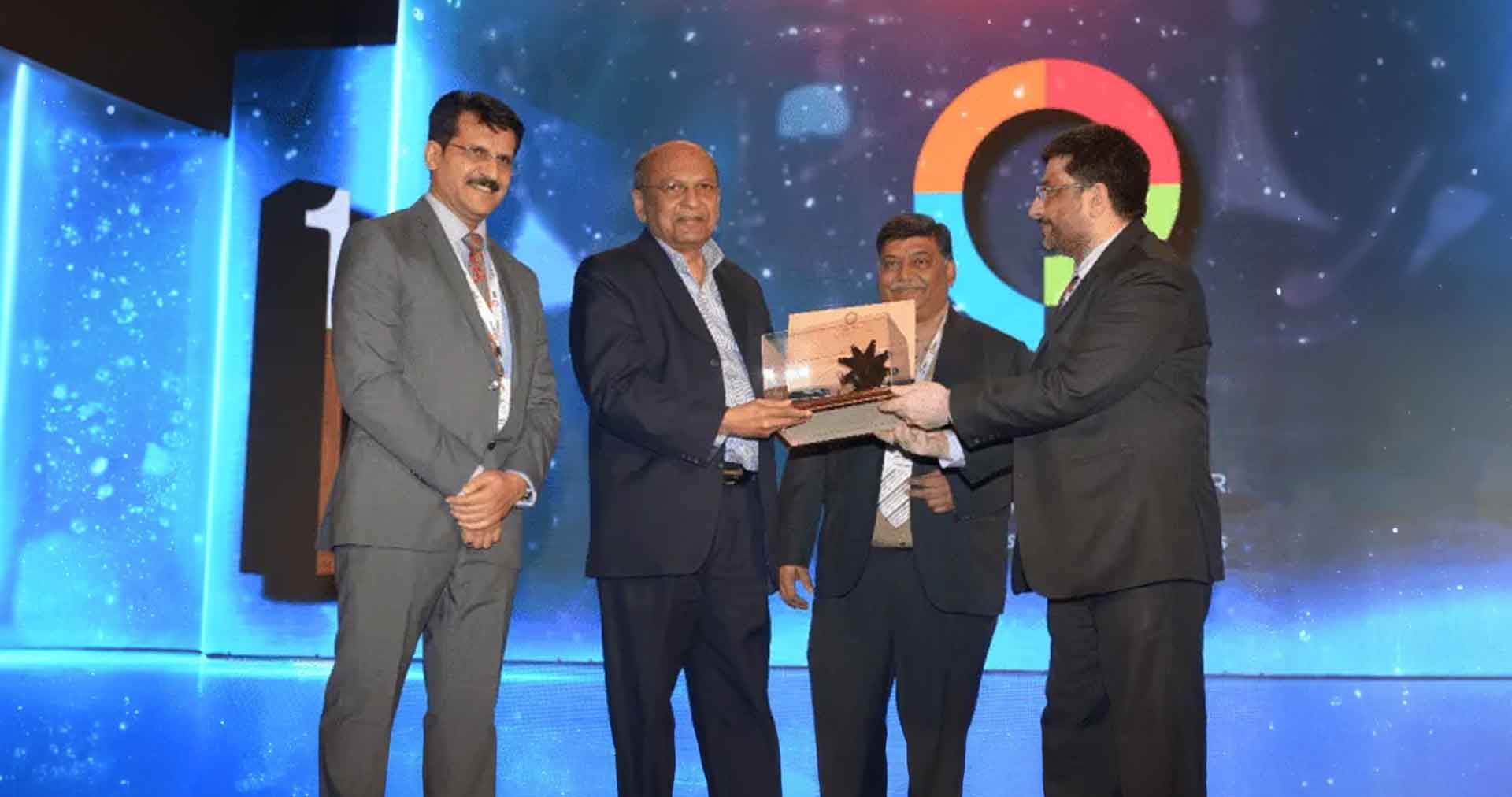
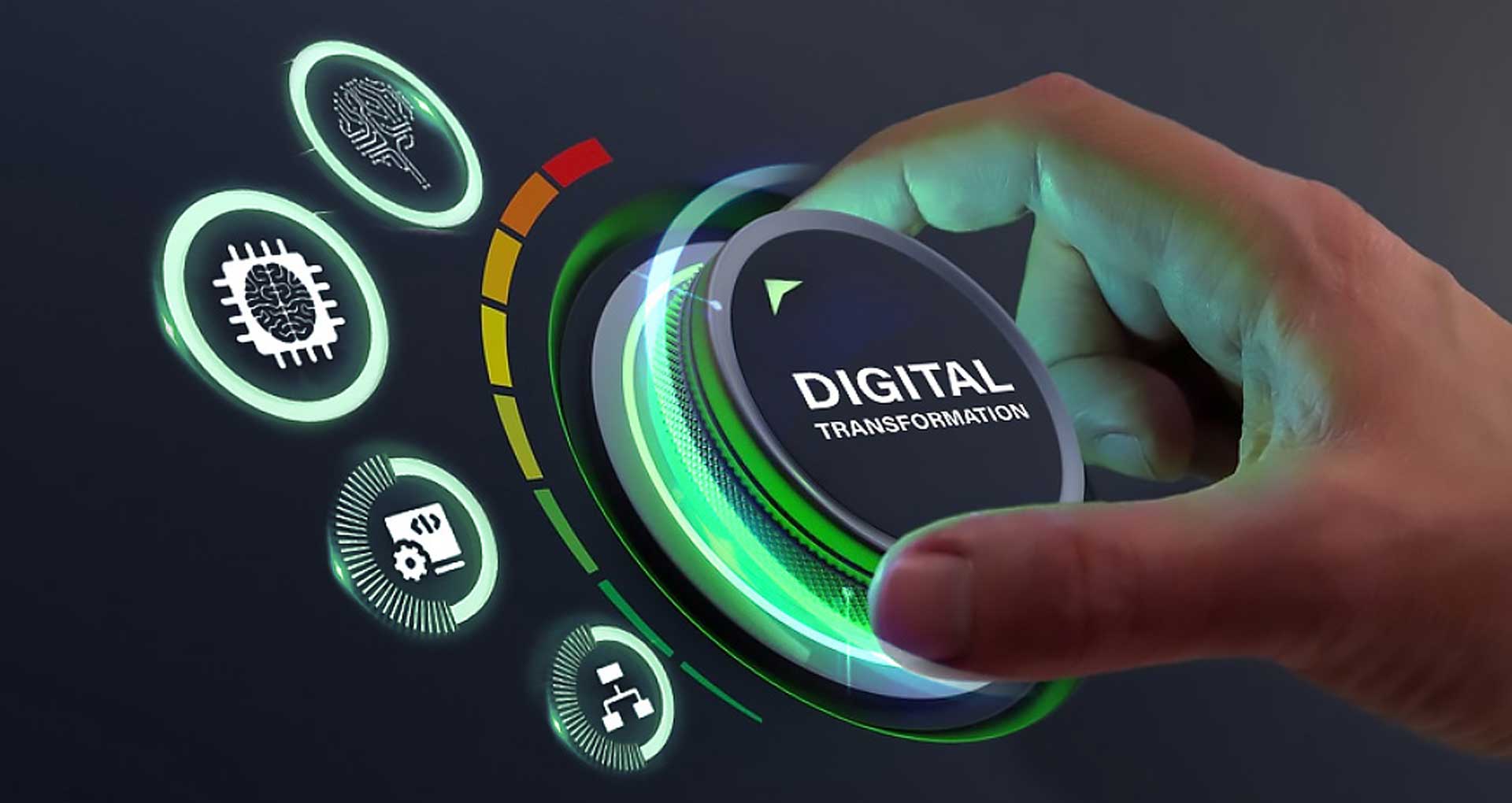





 30 Min
30 Min


